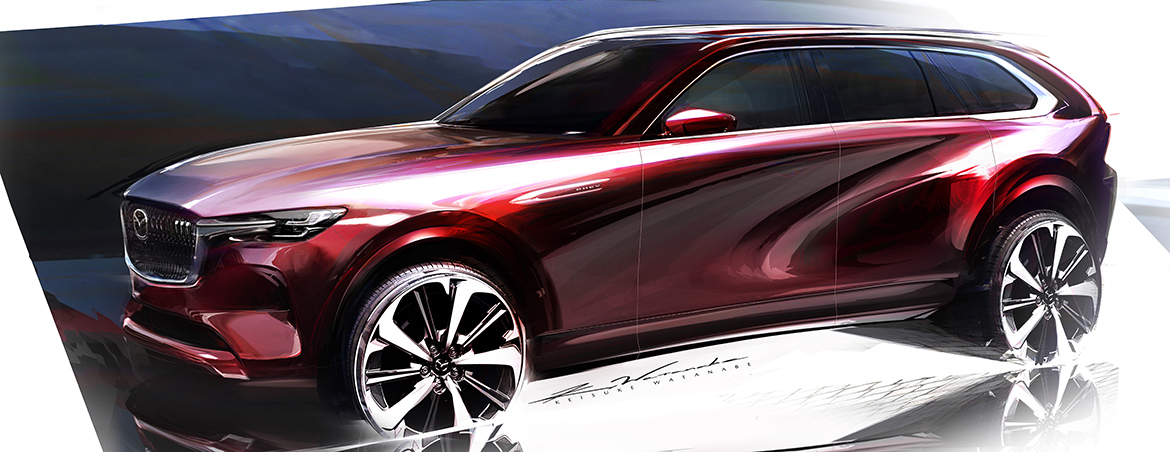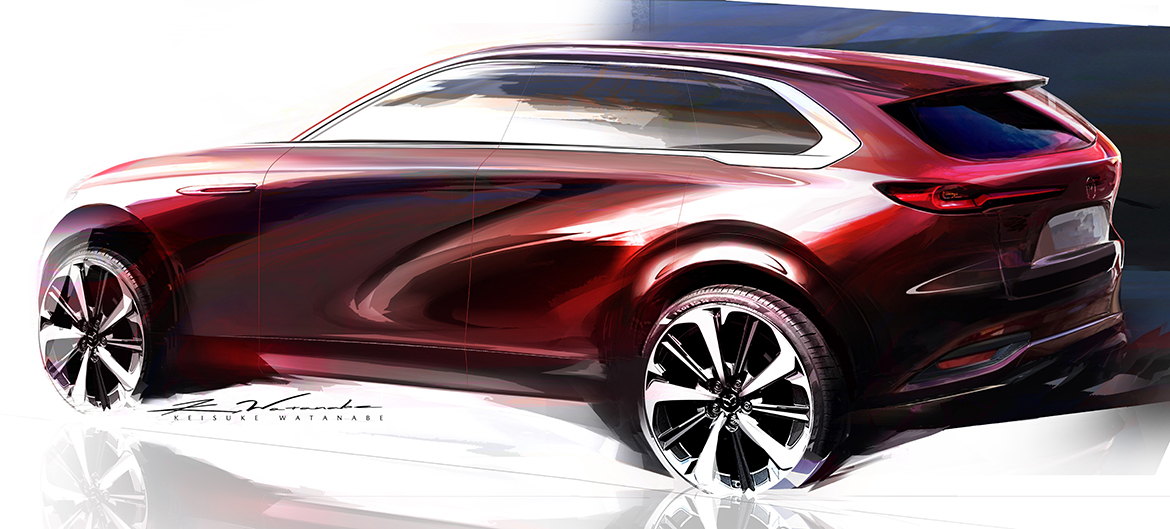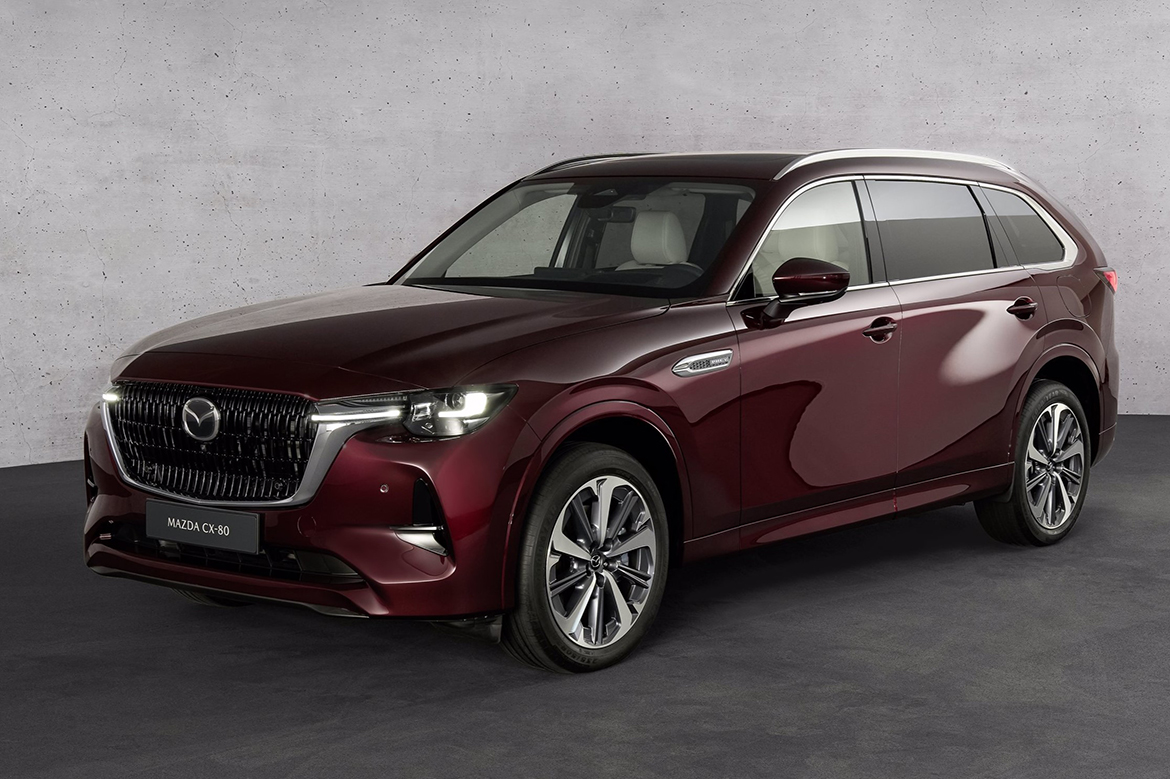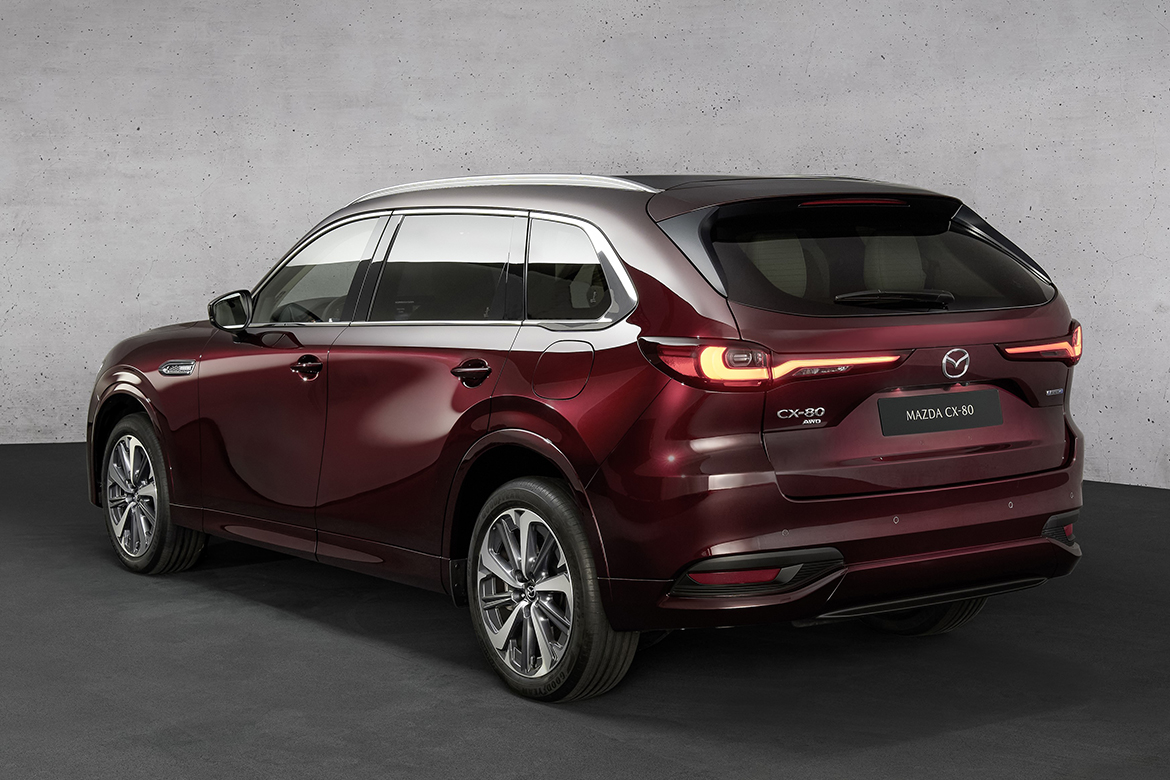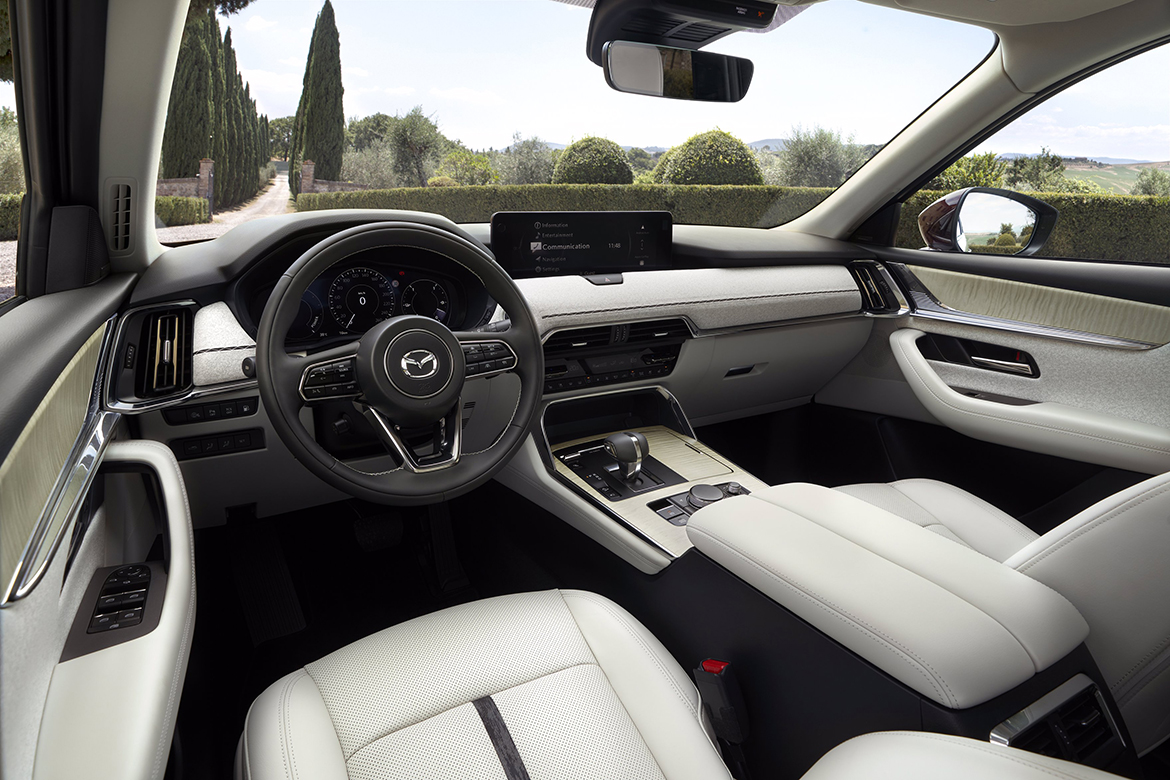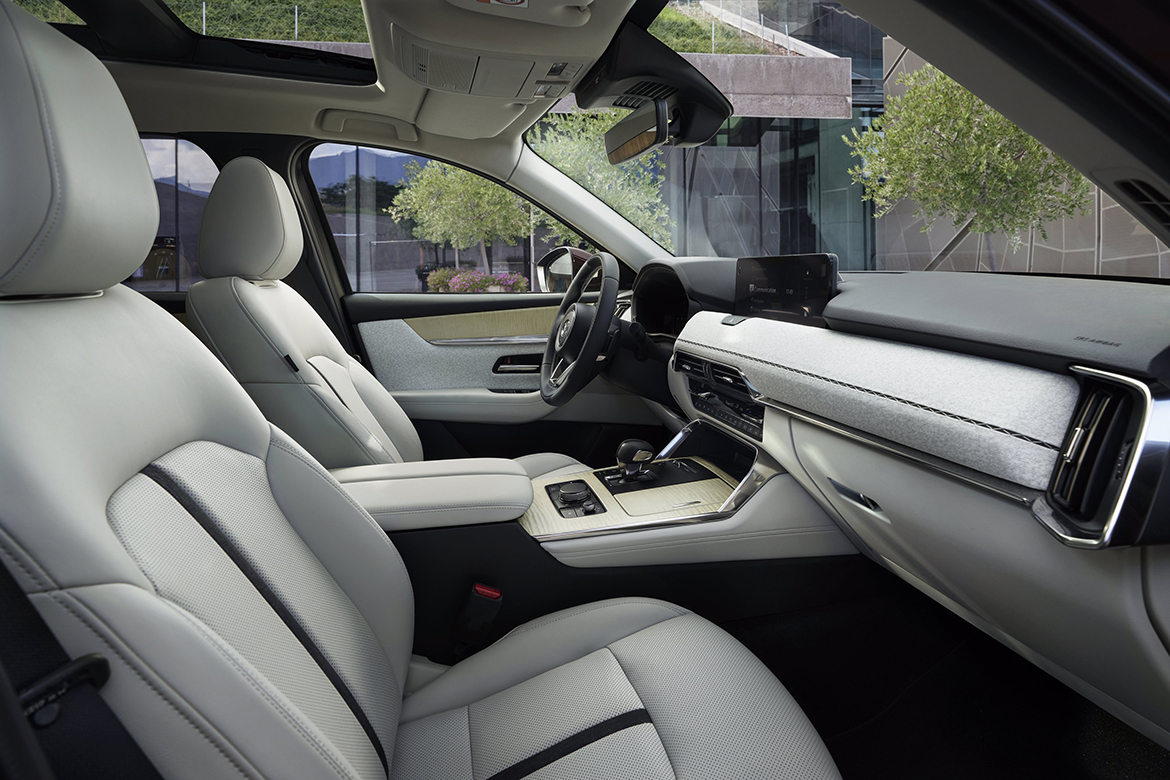SUV fever has also infected the world of flagships, the long luxury models with comfortable seats designed for travelling in comfort. “For the CX-80 we chose a high-wheel architecture to meet market demands but also for greater versatility. Suvs have a more complete use than flagships, suitable also for families, plus, in our case, we can also transport seven people. A remarkable plus”.
Jo Stenuit, Mazda Europe’s head of design since 2018, recounts the genesis of the CX-80, a full-size SUV with premium trim whose design takes its cue from its smaller sibling CX-60. “The kinship is there and it can be seen especially at the front, where the large grille gives it power and authority. The common elements continue up to the B pillar, then, moving towards the rear, the roofline curves more gently than on the CX-60 precisely to increase roominess for those sitting behind”, continues Stenuit who we meet at Mazda’s research and development centre in Frankfurt.
At 4.9 metres long, 1.89 metres wide and 1.71 metres high, the CX-80 has gained 25 centimetres over the CX-60 and has a wheelbase of 3.1 metres. The boot without the third row of seats is 687 litres which becomes 258 litres in a seven-seat configuration. On the subject of layout, the designers have come up with three different interior configurations: a classic three-seat bench seat in the rear and two other seats in the back, or three pairs of individual seats with a central passageway (six seats in total) in the middle of which a storage console can also be positioned.
As for the technology chapter, the CX-80 is equipped with all the latest driver assistance systems, while high up in the centre of the dashboard is the floating display to control the infotainment system. Even the instrumentation is digital, while the designers have chosen to keep the physical buttons to control the climate control: ‘Only with the right mix of the two worlds can an adequate level of safety be achieved’: it is a smart decision and increasingly rare in a world where everything is delegated to screens often with questions about safety while driving.
“The specificities of this model do not stop at the two extra seats. We worked extensively on the colours and created Melting Copper and Artisan Red, a warm, intense red reminiscent of the colour of wine. It’s different from classic Mazda red, it comes to life under the sun’s rays and is very elegant,’ Stenuit continues. On the other hand, one of the tasks of the style centre directed by Stenuit is precisely the discovery of new colours and trends: “We work in complete synergy with Japan, but we are very attentive to what is happening in Europe. I always tell my guys that they have to absorb everything they see, like sponges”.
The search for materials was guided by two Japanese concepts: Kaicho, or ‘harmony’, which combines a mix of fine materials such as maple wood, Nappa leather and chrome details; and Hacho, or ‘broken rhythm’, exemplified by the sophisticated Musubu stitching which, inspired by the centuries-old Japanese art of knot tying, highlights the refined beauty of craftsmanship and adds visual depth to the interior.


